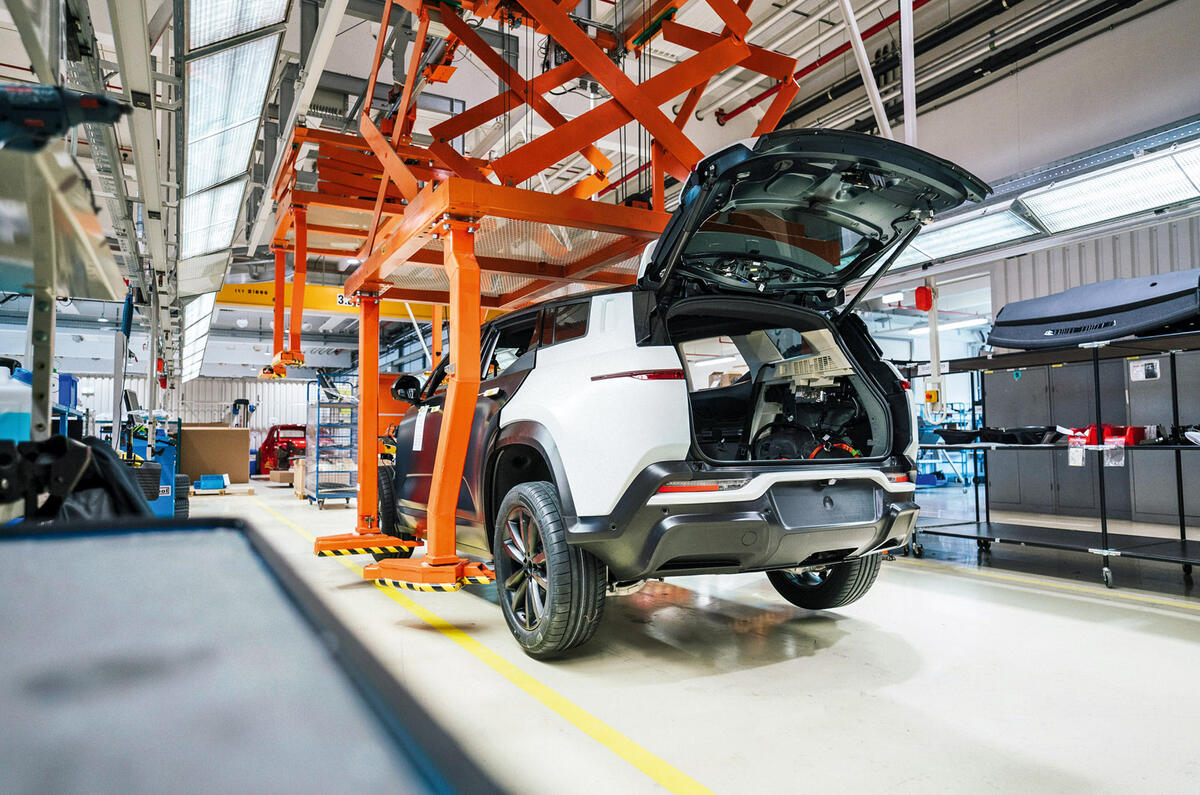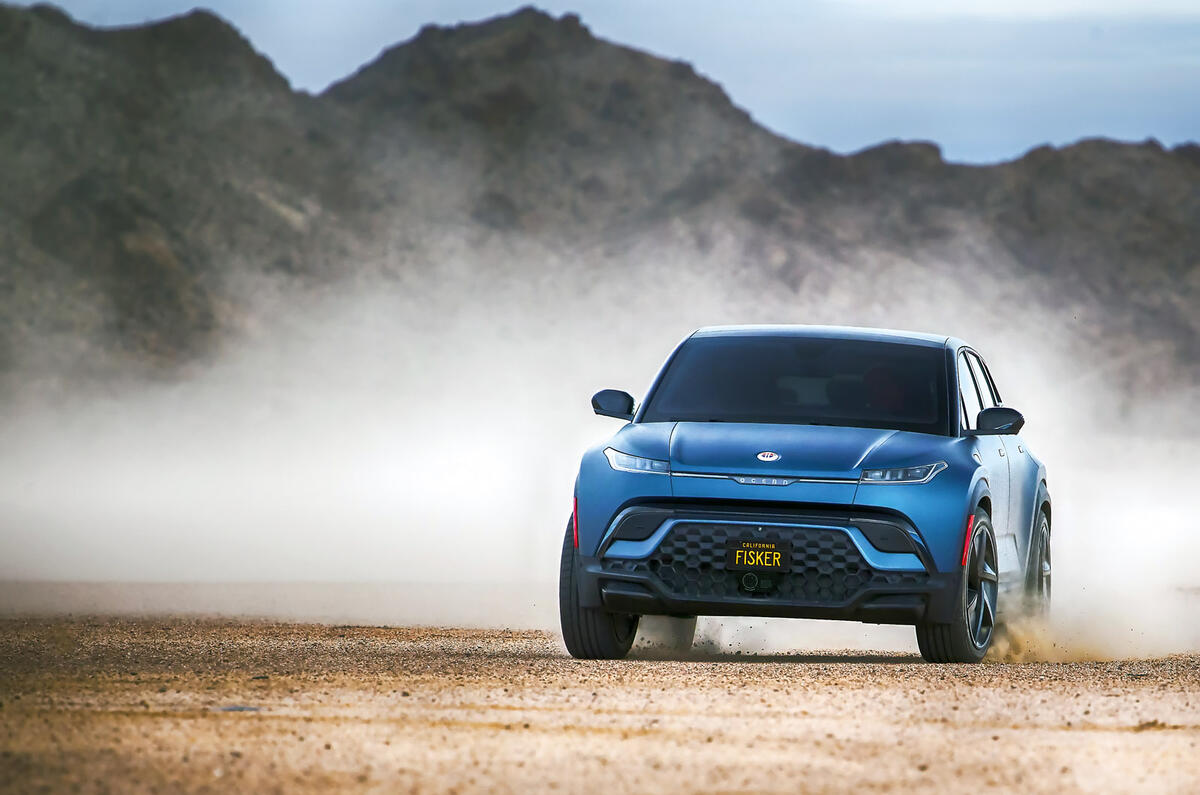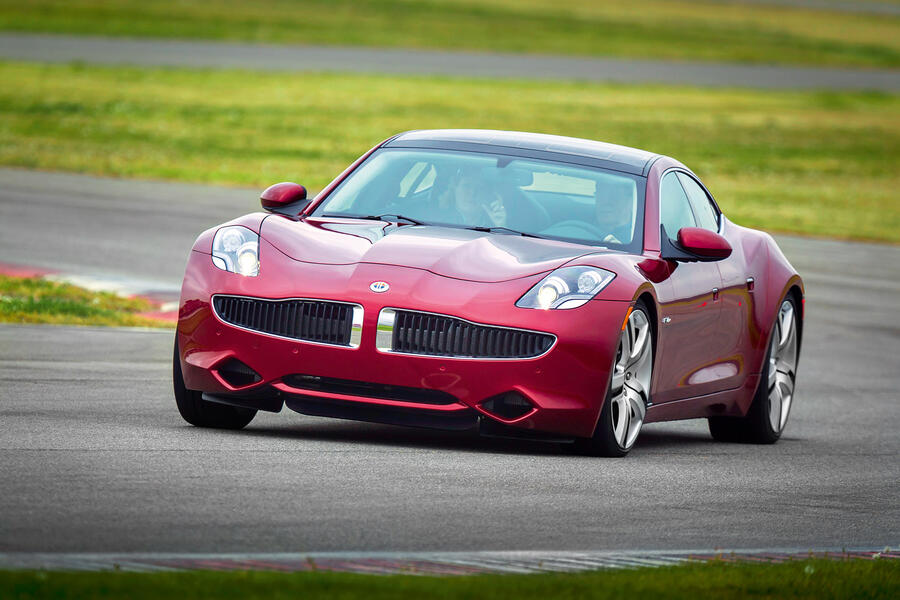Henrik Fisker’s idea of a decent hotel breakfast is three fried eggs on a large plate, sunny side up.
This much I discovered when I met the Danish-born, Californian-based EV entrepreneur in a Park Lane hotel last week – right before he jumped on a flight to Austria to review 47 Fisker Ocean prototypes that his Graz-based manufacturing partner, Magna Steyr, had just finished building. After that, he was off to Barcelona, Spain, where the Ocean was making its European debut at the Mobile World Conference.
Our time together was necessarily short, but what struck me was how efficiently Fisker could eat and talk at the same time – which seemed a neat metaphor for the speed-to-market philosophy that he believes will make his all-new £35,000 electric SUV successful when it goes on sale before the end of this year in five mainland European markets and the US, and then in the UK during 2023.
Even this breakneck progress with the Ocean is very far from the end of the Fisker Inc story, it turns out. Fisker wants to have launched four EV models by the end of 2025, and they won’t be what he dismisses as “sausage” models, resembling one another closely, but firmly distinctive designs aimed at disparate parts of the model matrix.
However, the Ocean is the pioneer in all this. It has been created and brought to the start of production in just over two years, specifically to minimise the time lag that usually affects the implementation of digital technology in cars, compared with much faster progress in the sphere of communications equipment.
“It’s almost as if the car industry decided 50 years ago that developing a model takes four and a half years and always will,” says Fisker. “That kind of interval means in-car tech for a new model has to be chosen three or four years before the model goes into production. It’s something younger buyers just won’t tolerate. Our aim is to make them feel, as they once did, that the car is an important flag carrier for technology. We have to do this if we want to be successful.”
You save time, explains Fisker, by rationing it strictly. At key stages of the design and engineering phases, where others might commonly lose six or nine months with “fiddling”, you commit to freezing your design and get on with making it. In the Ocean’s case, it undoubtedly helped that Fisker is both the design chief and the CEO of his eponymous company, so there’s no question of one faction fighting the other.
It’s a boon that the idea received early buy-in from Magna Steyr, which, as well as holding a 6% interest in the Ocean project, is renowned as one of the world’s most efficient contract car builders, with an illustrious clientele of premium marques that includes Aston Martin, BMW, Jaguar and Mercedes-Benz.




































Join the debate
Add your comment
I'm seeing little bits of different cars in his Ocean design, mainly from JLR. Fisker has been known to lift off other designers, even Aston took him for work he was doing off their second generation Vanquish (if I recall correctly).
The price is good, nobody could argue with that. Can he deliver? Can't say he hasn't kept trying over the years. But he's not going to usurp Tesla.
As for the V8 Vantage, did he or Ian Callum do the design? I personally believe the heavy lifting was done by Callum and you can clearly see that from the DB9 before it. I suspect that the exterior was 95% done by Callum with the interior finished by Fisker. Callum was asked if he'd like to go back and revise the design for a special edition by his new company, but he refused because it's very close to his original concept anyway.
Always amazed ventures like this get funding. Surely whoever bankrolled the Karma lost their shirt. The amount of money needed to give this a whirl must be utterly epic. Who's willing to take the risk? I suppose there's so much cash in system looking for a home, a certain amount gets thrown spoeculatively against the wall. If you're lucky and it sticks, you might end up owning a chunk of a huge new car company for cheap.
I know style is in the eye of the beholder and all that, but...I don't get how a car that has near square wheel arches, and doors that appear to have been through a side impact already looks good. Love the Z8 and Vantage, I think they've aged beautifully, but this...Good for new competitors in the market, and all the best to the company though.